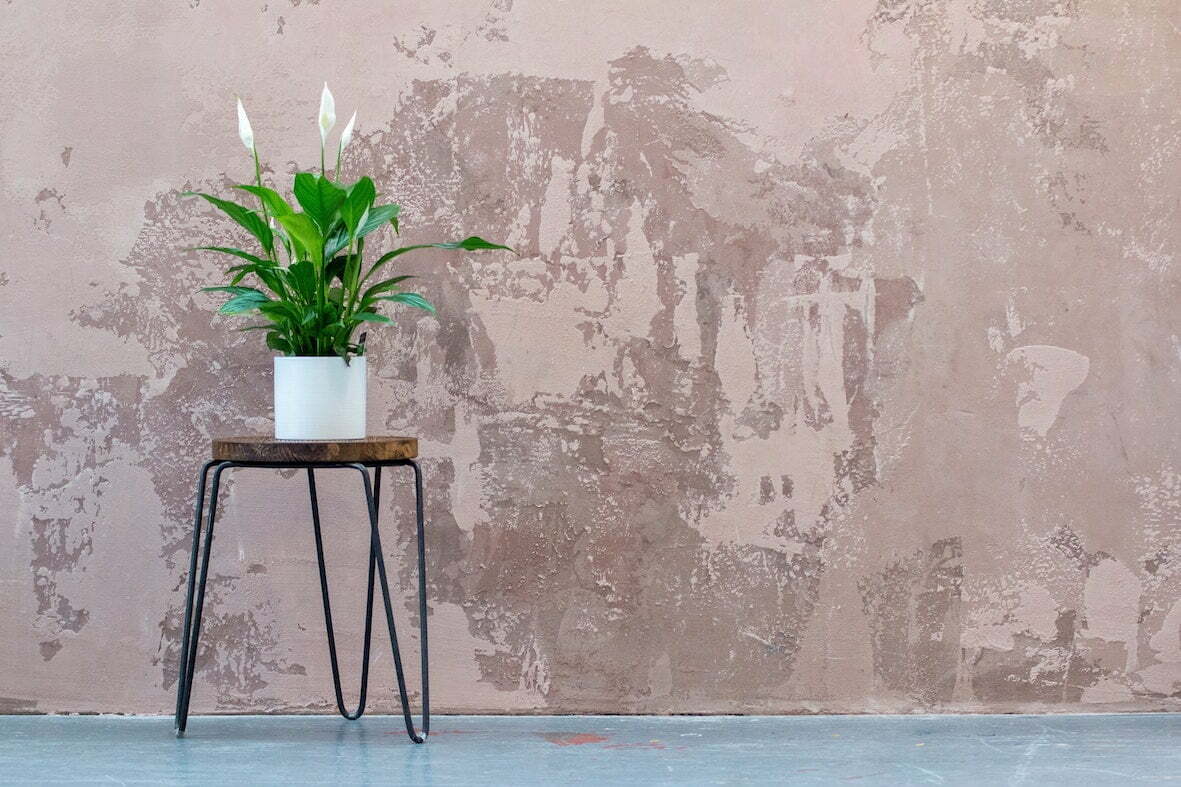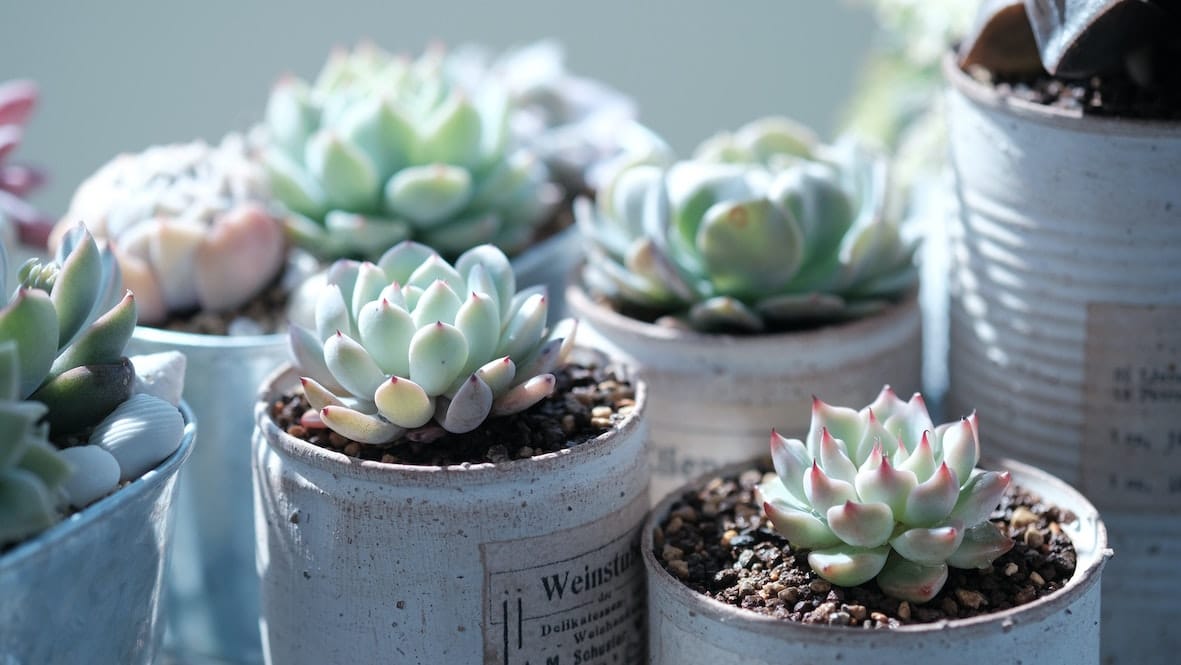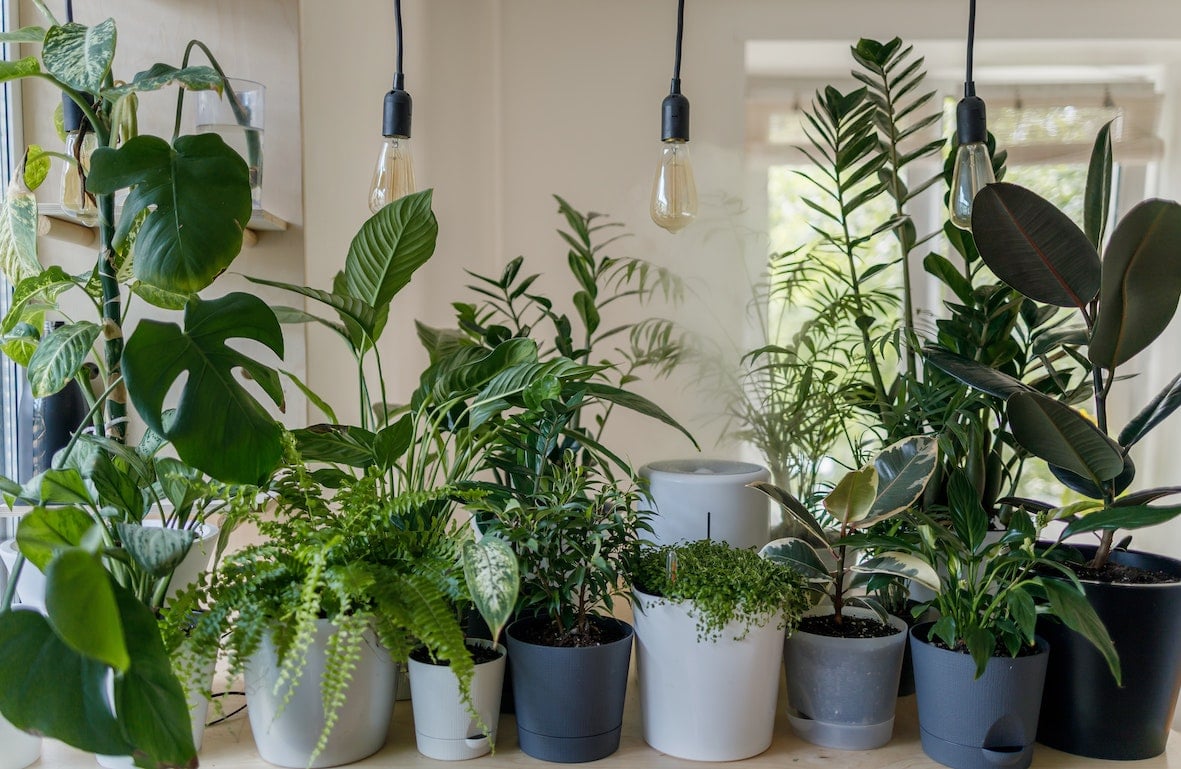Happy Houseplant Week! Our new technical manager Vicki Wright shows success with houseplants is down to a few simple indoor gardening strategies…
During the winter months, I reluctantly retreat from my garden – beaten back by the dark and ice. But it’s at this time of year, my houseplants begin to shine.
Each plant inhabits its own special place in my home. Winter stalwarts of white Narcissus, scented Hyacinths and shouty Amaryllis are a welcome distraction from the post-festive blues. My sons each have a Peace Lily in their rooms, and Spanish moss grows inside the shower cubicle!

Houseplant selection
Modern homes are a challenging place for many indoor gardens, so choose specimens that will cope with your space.
It’s best to avoid windowsills, which can be too cold in the winter and too hot in the summer. They also tend to have radiators underneath, which will blast your houseplant with hot dry air. This will cause so much environmental stress to the plant; it will likely fail to thrive.
My houseplants grow happily in peat-free SylvaGrow Multi-purpose. And for plants that are top-heavy (some cacti and succulents), I use a compost with additional loam such as peat-free SylvaGrow Multi-Purpose with added John Innes.
It’s all about the right plants in the right place. Cacti and succulents work well in dry, centrally heated homes. But many other houseplants require a consistent environment: not too hot or too cold.
Here in the high Northern hemisphere, light levels change dramatically across the year. Consider moving your sun-loving and shade-loving indoor plants once-a-year to give them the best growing conditions. African violets dislike strong sunlight, for example, so will be happy in a south-facing winter room. In the summer, be sure to move a Clivia to a darker room.
Plants become well suited to the environment in which they’re placed, so I only move my plants once or twice-a-year to avoid stressing them.

Watering your indoor garden
Light levels and temperature will affect the growth of houseplants and therefore how much watering they need. Plants don’t like to be doused in cold water, so before watering allow the water to come up to room temperature.
Make it a routine to check your pots before you water them. Lift your pots out of the decorative container to feel the weight. Dry pots will feel lighter than well-watered ones.
Some plants, such as African violets, prefer to be watered from below. Use a saucer of water, but don’t allow the pot to sit too long as the roots can ‘drown’. You can combat dry air by standing the pots on a water-filled pebble tray. This way they will benefit from the humid air without the roots getting overly wet.

Reducing houseplant pests
Many common houseplant problems result from incorrect watering. Sciarid flies or fungus gnats love damp compost. The flying adults are often seen on the compost surface or buzzing around the plant, but it’s their larvae that cause the damage. They feed on fungal growth and organic matter in the compost and cause damage to roots and soft tissues.
Allowing the surface of your compost to dry between waterings will make the growing media undesirable to fungus gnats. A barrier layer of Melcourt Horticultural Potting Grit on the surface will also deter the adults from laying eggs. Fungus gnats breed all year round, so getting control early will keep your plants clean and healthy.
Houseplants need limited feeding in the winter months. But feeding should be increased once the weather improves in March, and that much longed-for new growth begins.
Want to get outdoors? Dig into these January Jobs in the Garden.



